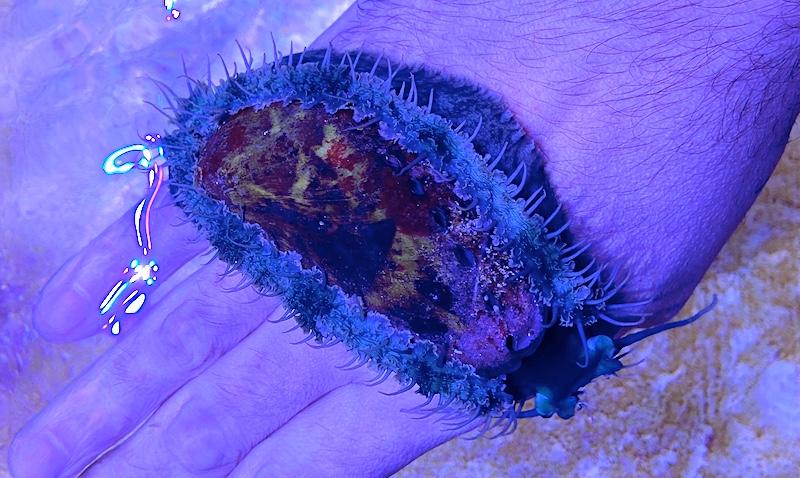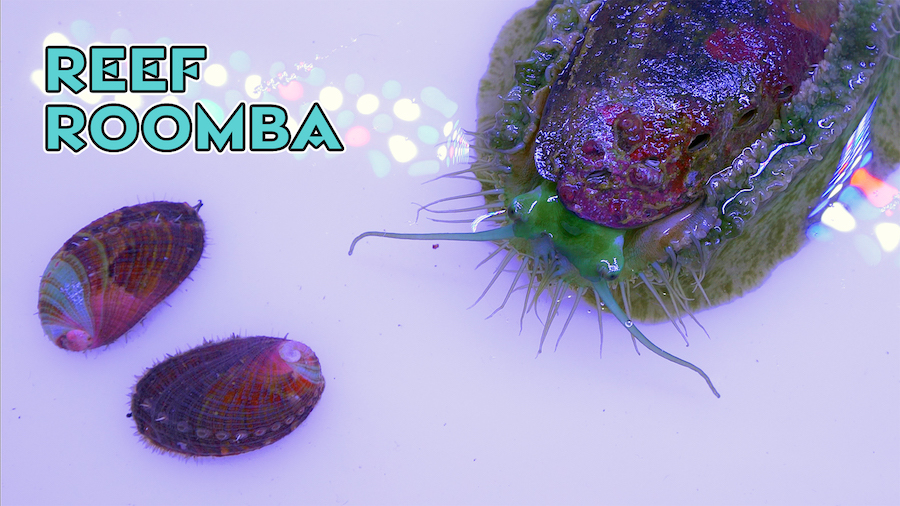Abalones are some of the coolest gastropods in the ocean, they are tasty, have beautiful shells, but they can also make for great reef aquarium animals. We simply love having them in several of our coral aquariums but there’s no denying that most reefers would be interested in their intense algae grazing behavior which we liken to having a Roomba for your reef.
The Roomba Abalone moniker came about in watching these curious low and flat molluscs move around our aquariums greedily mowing down every bit of algae in their path. The side to side movement of their head is very thorough and we struggle to find any substantial growths of algae in our tanks with the largest mature abalone at a rate of one five inch specimen per 4 x 8 foot coral table.
There are over 230 species of Haliotis abalones, most of which are temperate or coldwater but a smaller subset are found in tropical waters. All aquarium specimens are aquacultured, with the most common species being the Ass Ear Abalone, Haliotis asinina. Part of what makes abalones so great as a master aquarium grazer is that they are mostly associated with high flow environments such as wave-washed subtidal environments making them great for very high flow Acropora and SPS aquarium setups.
A young abalone looks remarkably similar to the ubiquitous Stomatella we have in our reef tanks by the thousands but they are not related. You would be reasonable in thinking that such a large and strong mollusc would totally bulldoze corals around but unlike large Trochus and Turbo snails they have great self awareness and we see virtually no evidence of them knocking frags over or moving any corals around – if you watch them you can see how carefully they move around the aquarium.

Unlike so many other clean up crew invertebrates we’ve found Haliotis abalones to be very hardy and depending on the species they can easily live for a decade, or up to 30 to 40 years for coldwater species in the wild. A single abalone may cost $20 but you won’t be regularly replacing them like many reefers come to expect with much cheaper snails and hermit crabs.
As you might predict from an animal that is wholly built and designed to rocks in very high flow is that the only tricky part of owning an abalone is knowing how to handle them when needed. If you come from the back you’ll signal them to hunker down but if approach from the front, the abalone will rear up onto your hand or a plastic card until it is no longer attached at the rear.
One thing to keep in mind about such a voracious algae eating machine like an abalone is that once they will still need to eat once they’ve mowed down what’s available in your tank, and we simply place an algae clip in the aquarium later in the day so they can finish up the nori once the herbivorous fish have had their fill. We got a nice batch of the hybrid Haliotis asinina x H. squamata abalones from Unique Corals last week and we look forward to seeing how they grow and compare to our three large mostly jade green abalone racers we’ve had for years.



